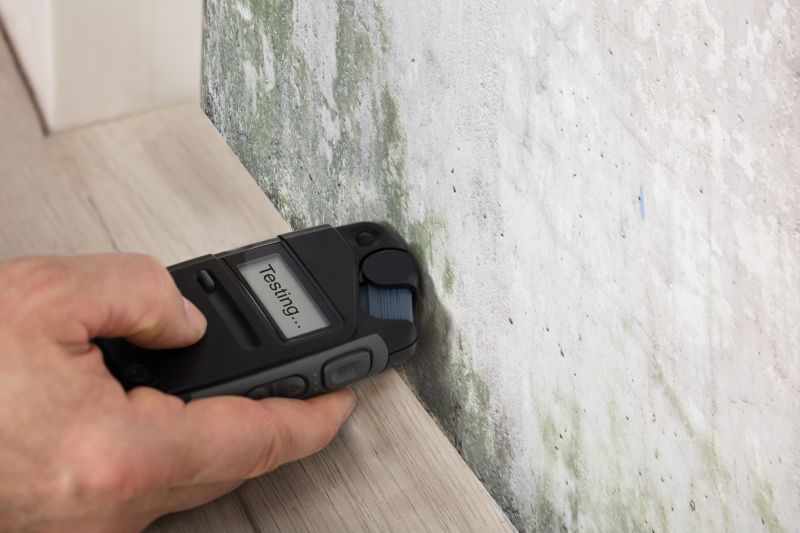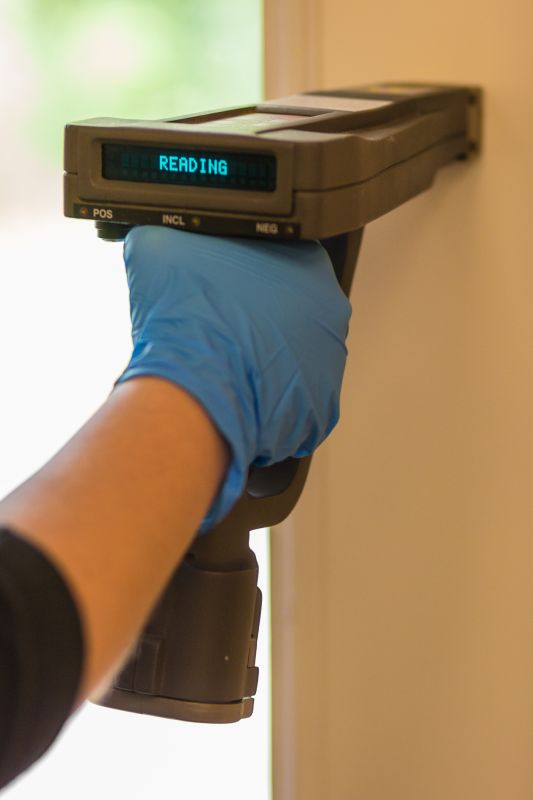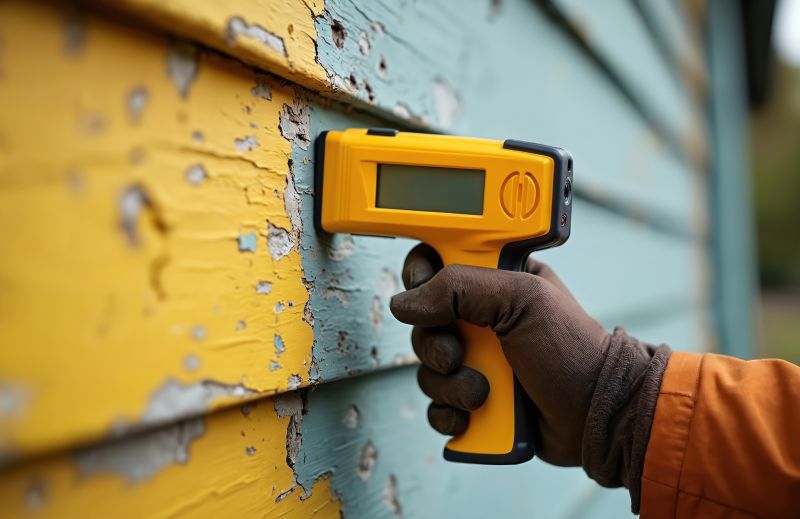Get Home Lead Testing in Long Island, NY
Home lead testing services help Long Island property owners identify lead hazards in paint, soil, or water to ensure safety during renovations or property assessments.
Home lead testing services provide a practical way for property owners in Long Island, NY, to assess potential health concerns related to lead exposure. Whether preparing for a renovation project, ensuring safety for children, or simply performing routine inspections, understanding the presence of lead in your home is an important step. Local contractors specializing in lead testing can offer reliable assessments, helping owners make informed decisions about their properties and plan necessary steps to address any issues.
For those exploring options to improve their home environment or comply with safety guidelines, comparing available services from nearby providers can help identify the most suitable solutions. Many property owners turn to experienced service providers in the area to ensure thorough testing and accurate results. Continuing to read can help uncover resources and connections to qualified professionals who can assist with your lead testing needs.
- Home Lead Testing - when a homeowner notices peeling paint or deteriorating surfaces that may contain lead-based paint.
- Residential Lead Inspection - if there are concerns about lead dust or paint hazards in older Long Island neighborhoods.
- Lead Paint Screening - during renovations or remodeling projects in homes built before 1978 to ensure safety.
- Environmental Lead Assessment - when a property owner wants to identify potential lead exposure risks in the indoor environment.
- Lead Contamination Testing - in situations where children or pregnant individuals are present and lead exposure is a concern.



Home lead testing services involve professionals inspecting a property to detect the presence of lead-based materials, such as lead paint or lead dust. These services typically include collecting samples from surfaces like walls, windowsills, or soil around the property, then analyzing them to determine if lead hazards exist. This process helps homeowners understand whether their home contains lead that could pose health risks, especially in older buildings where lead-based paint was commonly used before regulations changed. By identifying potential lead sources, property owners can make informed decisions about necessary repairs, renovations, or safety precautions.
Lead testing is particularly valuable in addressing problems related to deteriorating paint, peeling surfaces, or dust that may contain lead particles. When lead-based paint begins to chip or turn into dust, it can be ingested or inhaled, leading to serious health concerns, especially for children and pregnant women. Testing can reveal hidden hazards that might not be visible to the naked eye, allowing homeowners to take targeted action to prevent exposure. It can also be an essential step before renovations or remodeling projects, ensuring that any disturbed lead-based materials are managed safely and in compliance with safety guidelines.
Properties that commonly benefit from lead testing include older homes built before the 1978 ban on lead-based paint, which is most prevalent in structures from the early to mid-20th century. These homes often have layers of paint that may contain lead, especially if they have not been properly maintained or renovated. Lead testing is also relevant for rental properties, homes undergoing repairs, or buildings that have experienced water damage, which can cause paint to peel or dust to become airborne. Whether for a single-family residence, multi-unit building, or historic property, local service providers can assess the level of lead hazards present.
Homeowners who notice chipping or peeling paint, increased dust, or suspect their property may contain lead-based materials should consider lead testing services. These professionals help identify potential health risks associated with lead exposure, providing clarity and peace of mind. By working with local contractors experienced in lead testing, property owners can determine whether remediation or safety measures are necessary. This proactive approach is especially important for families with young children, pregnant women, or anyone living in an older property where lead hazards are more likely to be present.
The overview below groups typical Home Lead Testing projects into broad ranges so you can see how smaller, mid-sized, and larger jobs often compare in Long Island, NY.
In many markets, a large share of routine jobs stays in the lower and middle ranges, while only a smaller percentage of projects moves into the highest bands when the work is more complex or site conditions are harder than average.
Smaller Repairs - Many routine lead testing projects in Long Island typically cost between $250 and $600. These jobs often involve testing a few key areas or fixtures to identify potential lead hazards. Most projects fall within this middle range, depending on property size and complexity.
Full Home Testing - Comprehensive testing of an entire home can range from $1,000 to $3,000 for many local contractors. Larger or older properties with multiple zones may push costs higher, especially if extensive sampling or detailed reports are required.
Environmental Sampling - For detailed environmental lead assessments, costs generally start around $2,000 and can reach $5,000 or more for complex projects. These tend to be less common but are necessary for properties undergoing renovation or with suspected widespread lead presence.
Major Renovation Testing - Large-scale renovation or demolition projects often involve testing budgets of $3,000 to $7,000+, reflecting the need for extensive sampling and compliance documentation. Many projects in this tier are larger or more complex, with fewer falling into this highest cost range.
Actual totals will depend on details like access to the work area, the scope of the project, and the materials selected, so use these as general starting points rather than exact figures.
Environmental Testing Projects - local contractors perform testing for indoor air quality, mold, and other environmental hazards, utilizing similar sampling and analysis skills as home lead testing.
Radon Screening Services - these projects involve detecting radon levels inside homes, requiring specialized testing tools and planning comparable to lead testing procedures.
Water Quality Testing - local service providers assess drinking water for contaminants, using sampling techniques and safety protocols akin to lead testing in residential settings.
Asbestos Inspection Projects - contractors identify asbestos presence in building materials, employing similar inspection methods and planning as lead testing services.
Building Material Testing - evaluating materials for hazardous substances involves sampling and analysis skills similar to those used in lead testing services.
Hazardous Material Assessment - projects that identify various indoor environmental hazards require planning and testing expertise comparable to lead detection efforts.

When comparing service providers for home lead testing, it’s important to consider their experience with similar projects. Homeowners should look for local contractors who have a proven track record of handling lead testing in residential settings, especially within the specific area such as Long Island, NY. An experienced professional will be familiar with common sources of lead in homes, local regulations, and the best methods for accurate testing. This familiarity can help ensure that the testing process is thorough and that any potential issues are identified correctly, providing peace of mind for homeowners seeking reliable results.
Clear, written expectations are essential when choosing a lead testing service. Homeowners should seek out providers who can offer detailed information about what the testing process involves, what the results will include, and any follow-up steps that might be necessary. Having this information in writing helps prevent misunderstandings and ensures that everyone is aligned on the scope of work. It’s also beneficial to ask for a transparent explanation of what the testing does and does not cover, so expectations are realistic and well-informed before any work begins.
Reputable references and effective communication are key factors in selecting the right local service providers. Homeowners should look for contractors who can provide references from previous clients with similar projects, demonstrating their reliability and quality of work. Good communication from the contractor-such as responsiveness, clarity, and willingness to answer questions-can make the process smoother and more comfortable. While the site introduces homeowners to local options, it’s important to remember that the actual testing work is performed by qualified local contractors, not the platform itself. Comparing these aspects can help ensure that the chosen provider is well-suited to meet specific needs and deliver dependable service.
Property owners in Long Island, NY use Home Lead Testing services for practical projects around their homes and businesses. This guide focuses on everyday jobs and straightforward project options.


Homeowners in Long Island, NY may seek lead testing services when preparing to sell a property, especially if it’s an older home with paint or materials that could contain lead-based substances. Renovation projects, such as kitchen or bathroom upgrades, often prompt property owners to check for lead hazards before beginning work, ensuring safety for everyone involved. Additionally, families with young children or expecting parents might look for lead testing to confirm their home environment is safe and free from potential lead exposure risks.
Many property owners consider lead testing after noticing signs of deterioration in older paint or suspecting contamination from previous renovations. Rental property owners may also pursue testing to meet local regulations or to provide tenants with a safe living space. In some cases, routine inspections or health concerns lead residents to seek out local contractors who can perform thorough lead assessments, helping them make informed decisions about necessary repairs or safety measures.
What is home lead testing? Home lead testing involves assessing your property for the presence of lead-based paint or lead dust, which can pose health risks, especially in older homes.
Why should I consider lead testing for my home? Lead testing helps identify potential health hazards caused by lead exposure, allowing homeowners to take appropriate steps to mitigate risks.
How do local contractors perform lead testing? Certified service providers use specialized equipment and methods to collect samples and analyze them for lead content accurately.
Is lead testing necessary if my home was built after 1978? Homes built after 1978 are less likely to have lead-based paint, but testing can confirm the absence of lead hazards if there are concerns.
How can I find local lead testing professionals? This website can connect homeowners with qualified local contractors experienced in lead testing services in the area.
Home Lead Testing Services - Property owners can use this service to identify potential lead hazards before planning renovations or remodeling projects.
Residential Lead Testing - Homeowners can schedule testing to ensure their living environment is safe for children and family members.
Pre-Listing Lead Inspection - Sellers can have their property tested to address any lead concerns prior to putting it on the market.
Environmental Lead Assessment - Property owners can work with local contractors to evaluate and manage lead risks in older homes or buildings.

If you are thinking about Home Lead Testing for a property in Long Island, NY, this guide is meant to help you understand the work, the typical project types, and how different options might fit your plans.
When you are ready, you can use the quote form on this page to share a few details about your project. From there, local pros can review the basics and respond with options that match what you have in mind.
